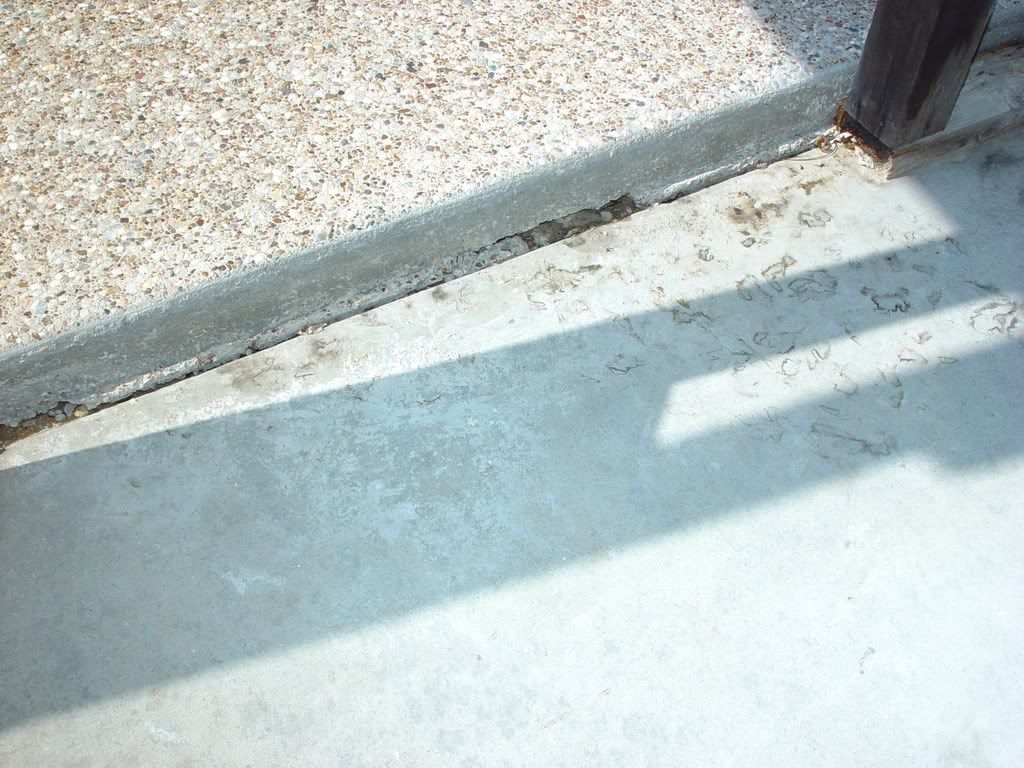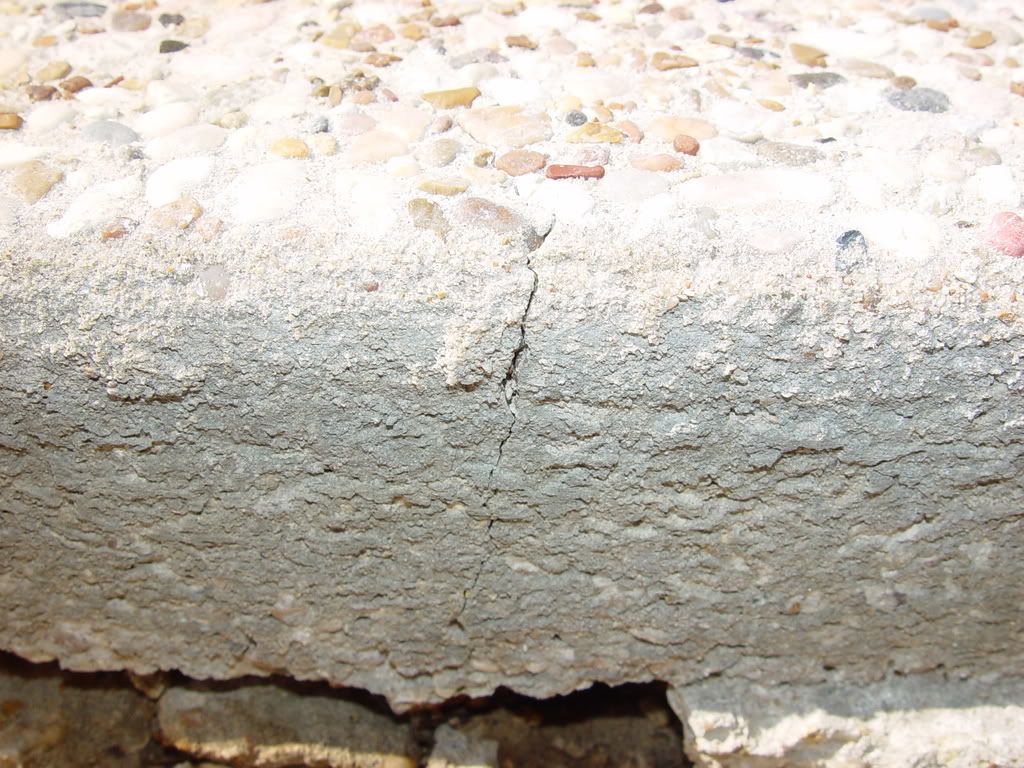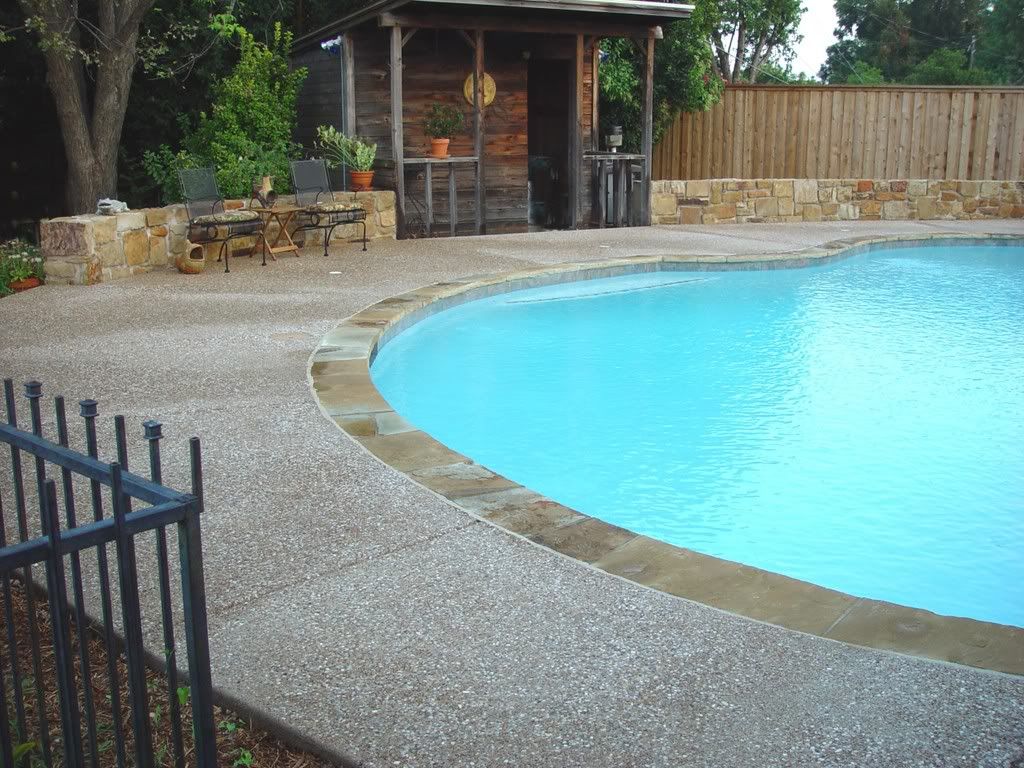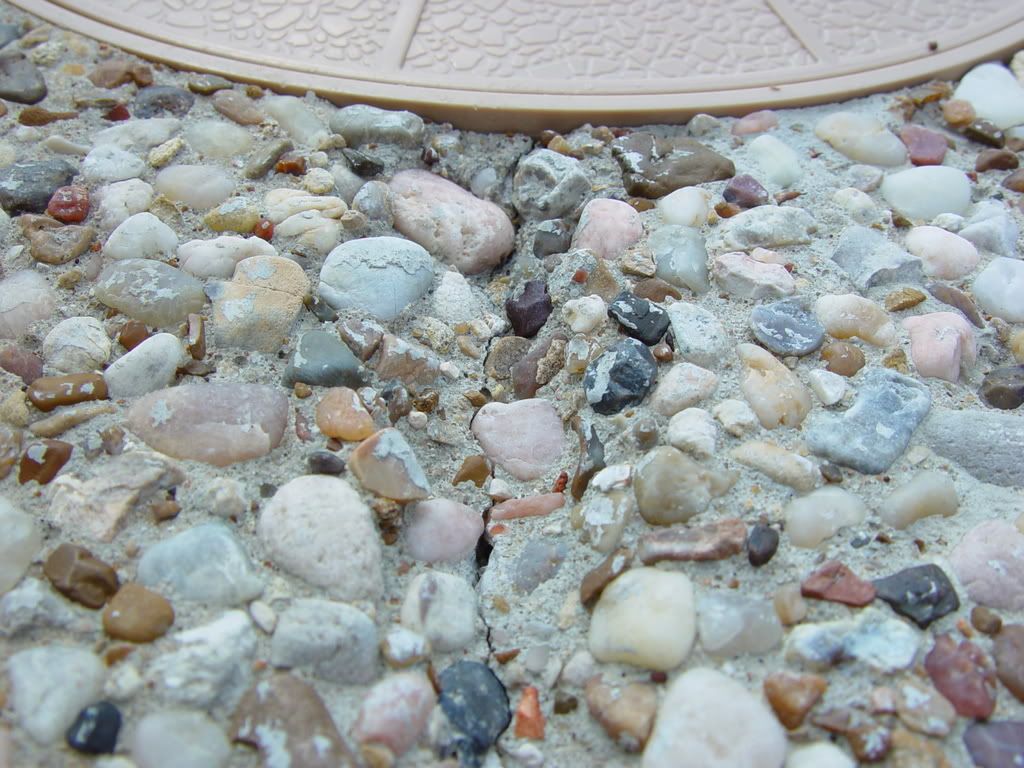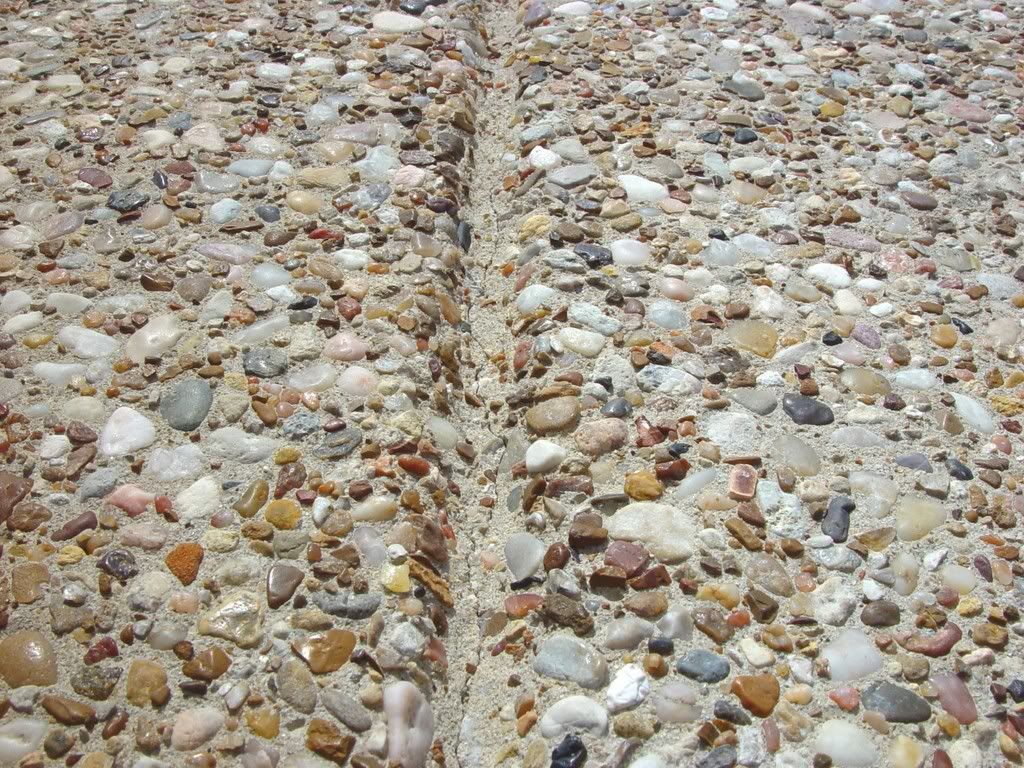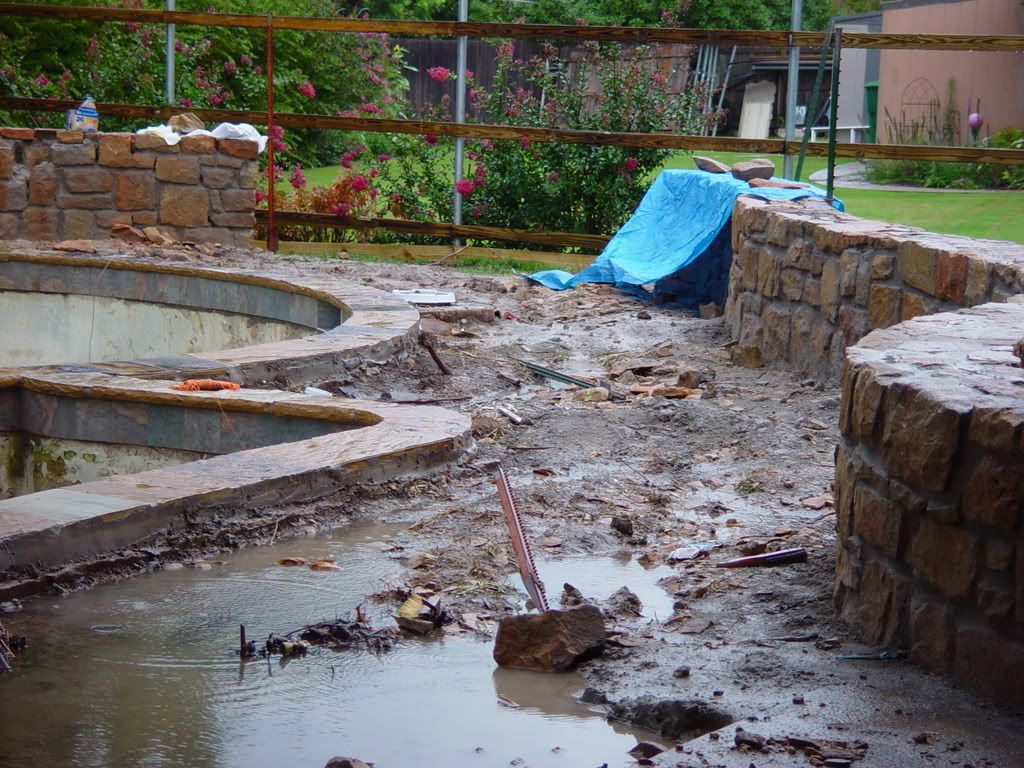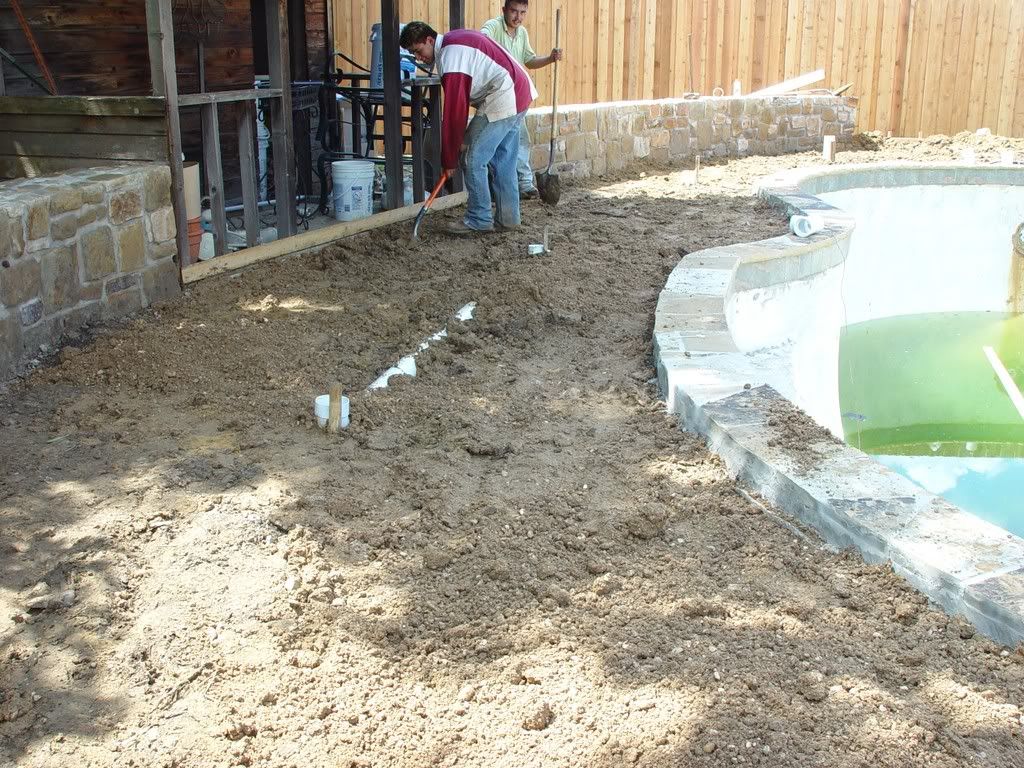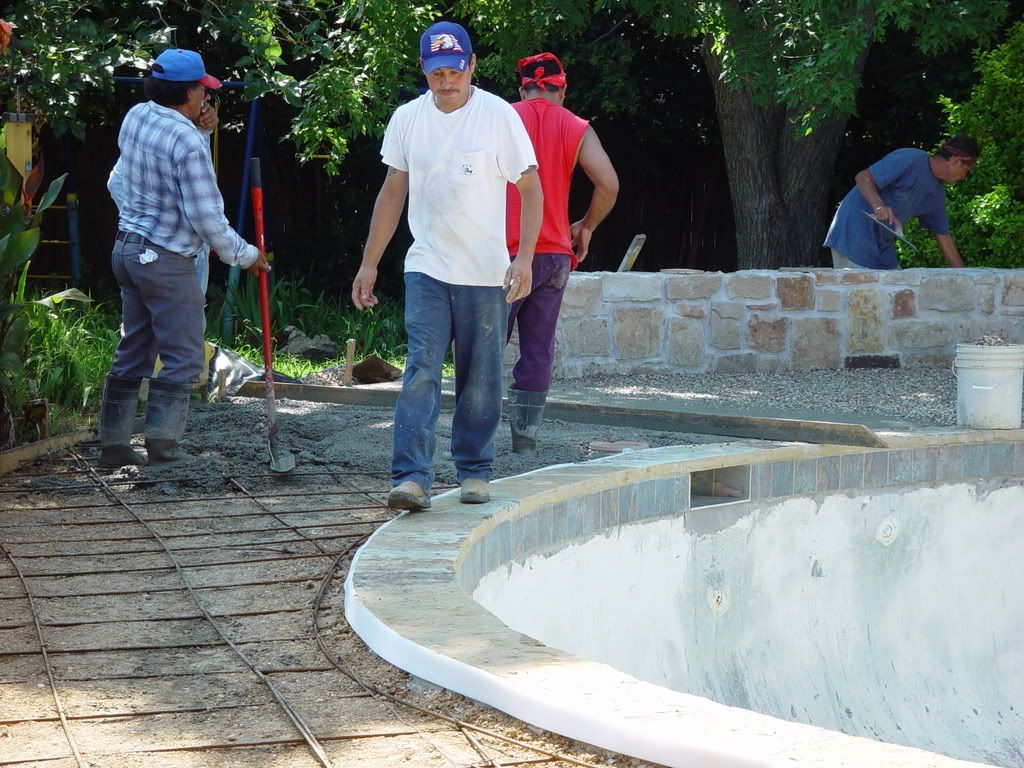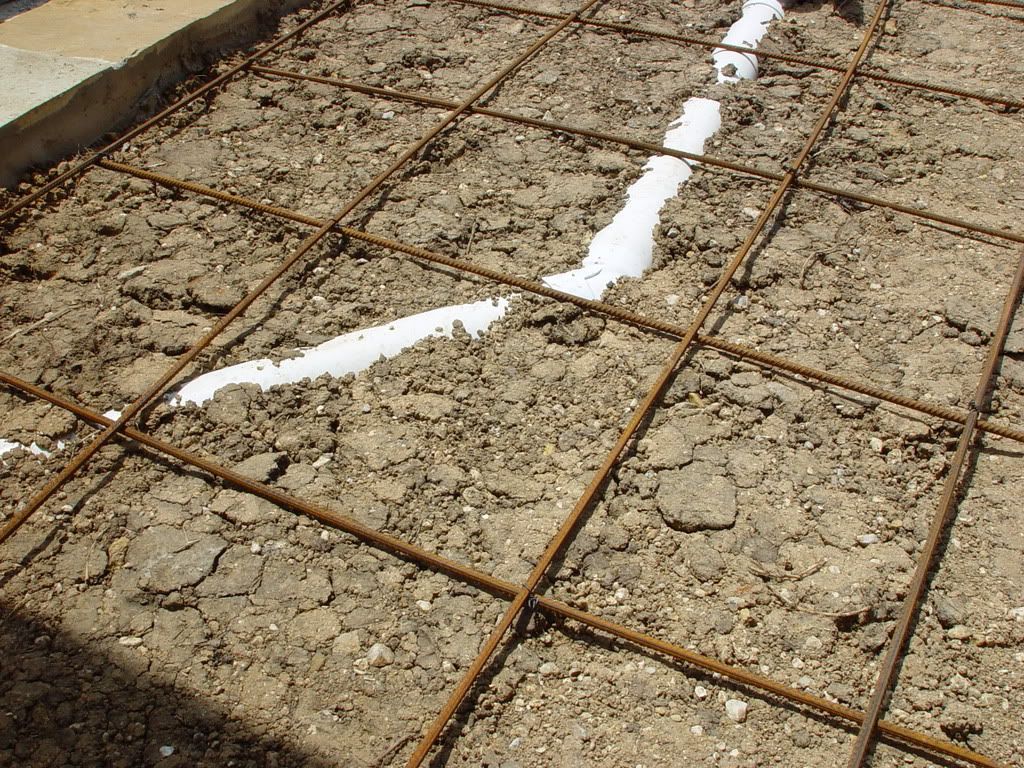We had our pool renovated this summer and the exposed aggregate deck was poured on July 16th. 3/8 rebar was used, and the layout looked good. It's about 4" thick. The expansion joints were tooled rather than using redwood or vinyl strips. Cracks are beginning to show... I quess you would call them hairline, all the way across five of the joints. Plus another crack not quite mid way between two joints. The deck at this location is about 8 ft. wide, and the crack runs the entire width. One of the cracked joints crosses right across the middle of a skimmer.
The week the deck was poured temps were in the mid to upper 90's. I had planned to keep it lightly misted for a few days to slow down curing, and hopefully strenghten the concrete. Well... bright and early the next morning the crew to sandblast the old plaster from the gunite shell were there. I mentioned to them that the deck was just poured, and they said it was fine. The sandblast rig was a heavy steel container that probably weighed at least 200 to 300 pounds when full of sand. It had two rear wheels and a padded steel brace on the front . As the sand would get low the helper would raise up on the rig and drop the front brace down on the deck. He did this quite often. I told him my concern, and gave him an old quilt for extra padding. Also called the pool supervisor, who said it wasn't a problem. It was a big concern to me, and now I wish I would have told him to stop. Our sidewalk which was poured in the mid 70's has tooled expansion joints, and only two joints have cracked. I'm afraid my deck is just going to get worse. Anyone out there with a similar experience, or experience in concrete work.
Thanks, Dan
The week the deck was poured temps were in the mid to upper 90's. I had planned to keep it lightly misted for a few days to slow down curing, and hopefully strenghten the concrete. Well... bright and early the next morning the crew to sandblast the old plaster from the gunite shell were there. I mentioned to them that the deck was just poured, and they said it was fine. The sandblast rig was a heavy steel container that probably weighed at least 200 to 300 pounds when full of sand. It had two rear wheels and a padded steel brace on the front . As the sand would get low the helper would raise up on the rig and drop the front brace down on the deck. He did this quite often. I told him my concern, and gave him an old quilt for extra padding. Also called the pool supervisor, who said it wasn't a problem. It was a big concern to me, and now I wish I would have told him to stop. Our sidewalk which was poured in the mid 70's has tooled expansion joints, and only two joints have cracked. I'm afraid my deck is just going to get worse. Anyone out there with a similar experience, or experience in concrete work.
Thanks, Dan


